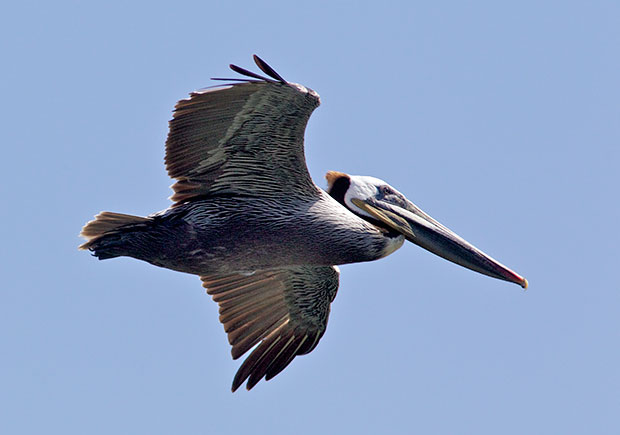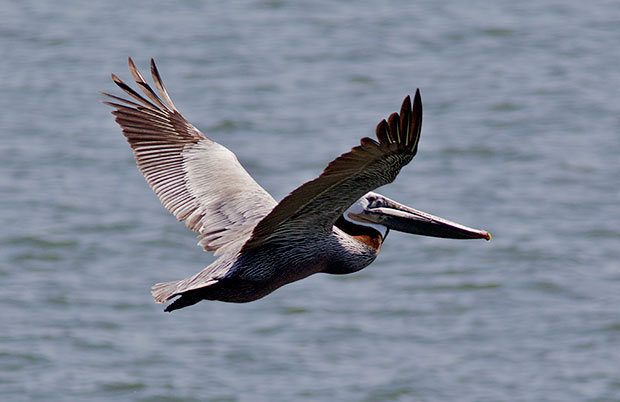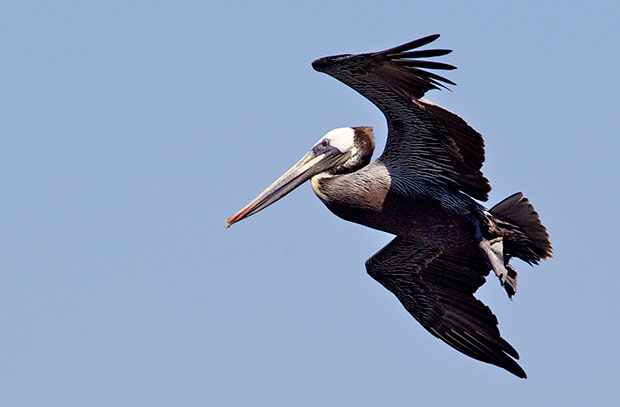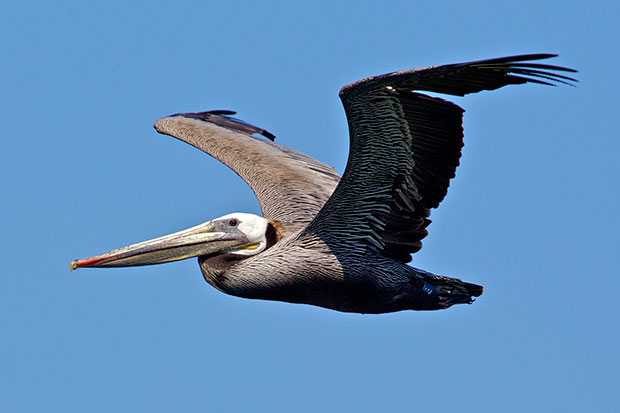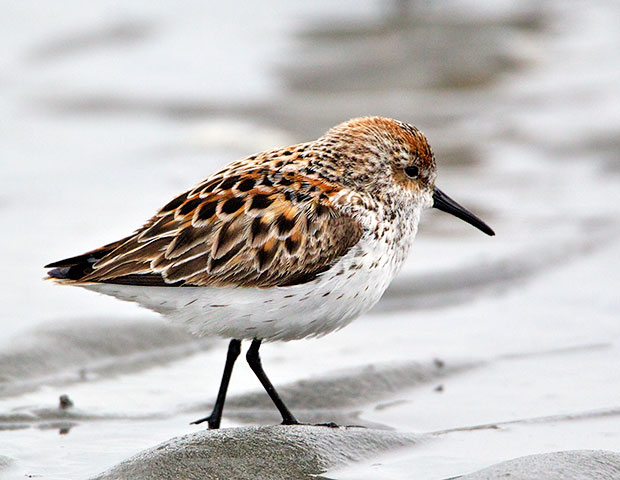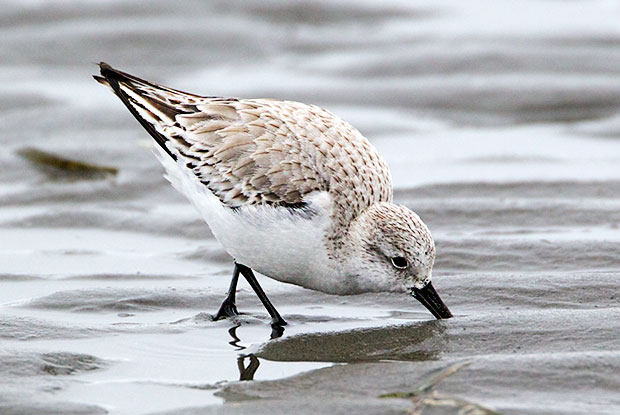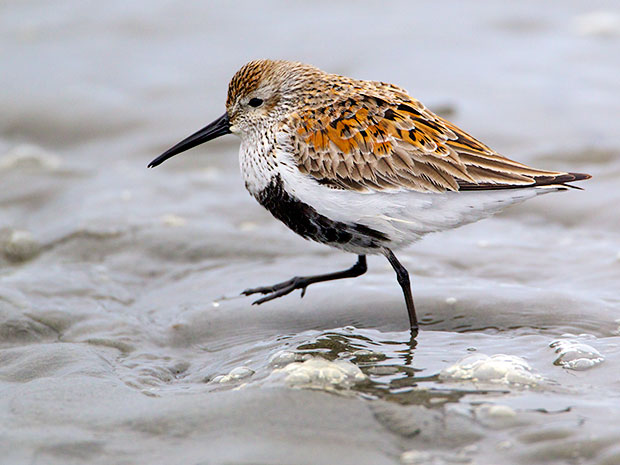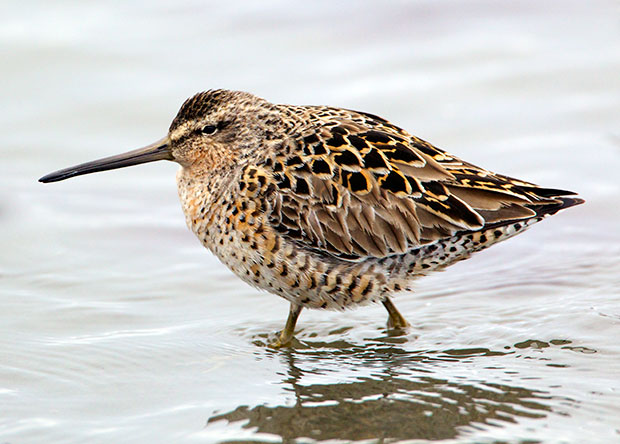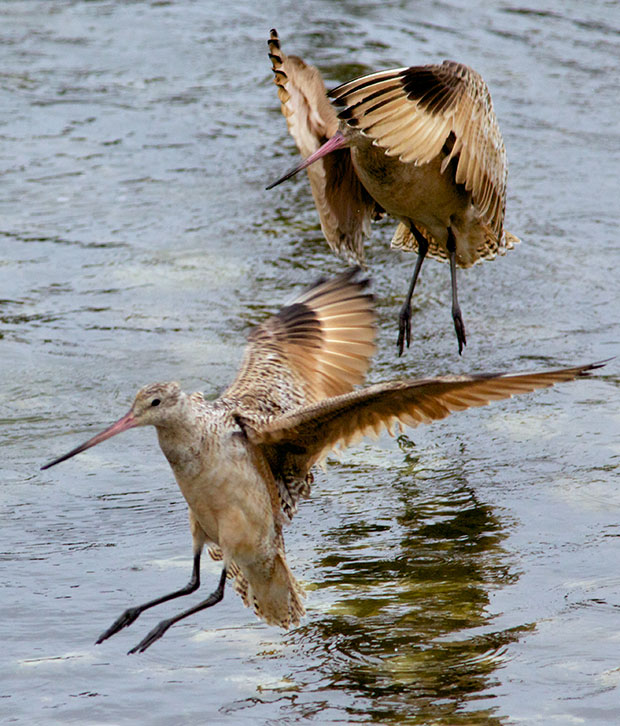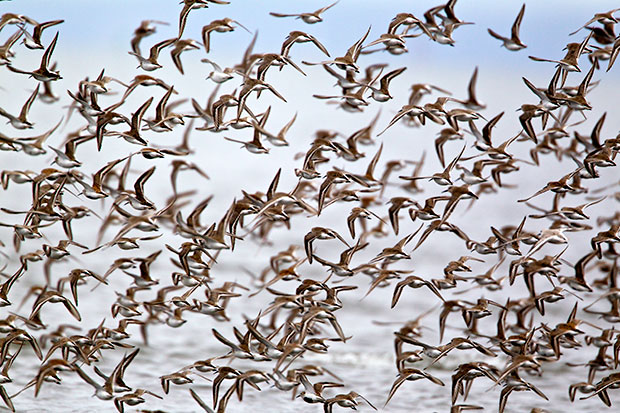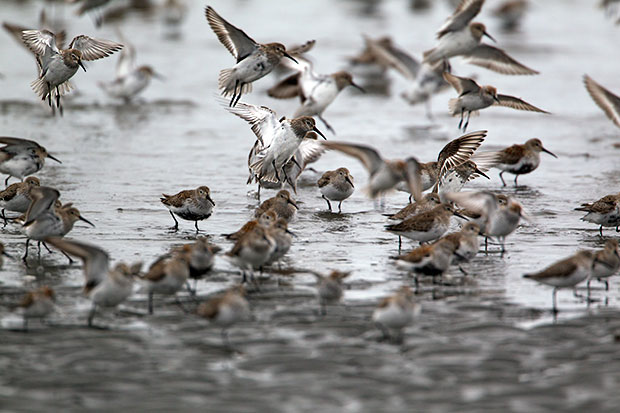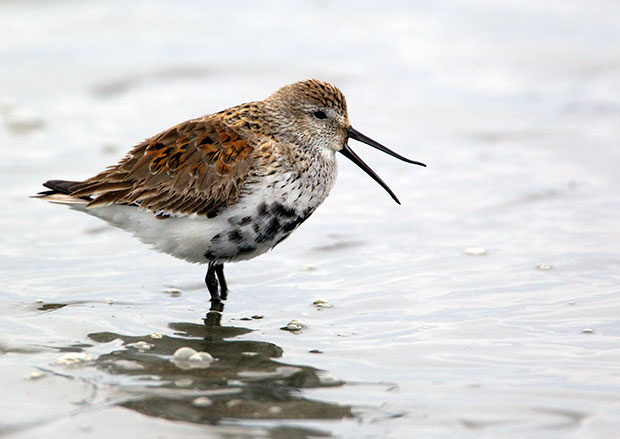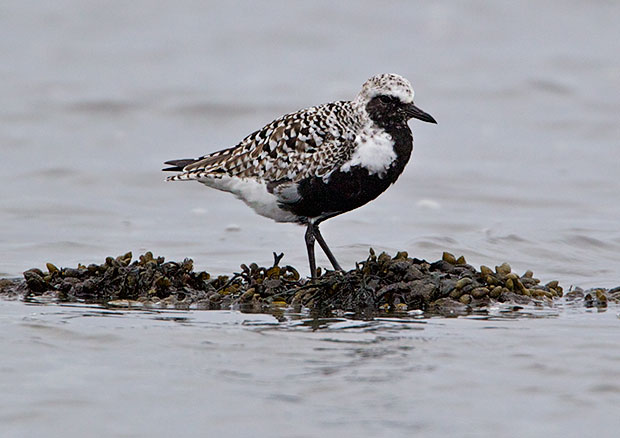Last Friday I headed for the Washington Coast hoping to finally catch the Spring shorebirds migration in sunshine, in contrast to earlier trips this year. Since high tides were relatively late, I went to Westport first to see if I could get some pictures of Common Loons in breeding plumage.
I was surprised when I pulled into the marina parking lot to see a car that looked exactly like John’s new car. Just as I was wondering if it was really his car, he walked up from the marina. Turned out he had come to get pictures of the Brown Pelicans, not shorebirds. We decided to hang out most of the morning trying to get some good shots as flock after flock of Pelicans flew overhead on the way back from the fishing grounds.
Needless to say, trying to focus a telephoto lens on a flock of pelicans as they fly is pretty much a hit-and-miss affair. You seldom manage to get the flock in focus, unless they’re quite a ways away, meaning you have to enlarge the image, which creates its own problems. Still I was quite happy with this shot, which gives a sense of just how closely they fly together,
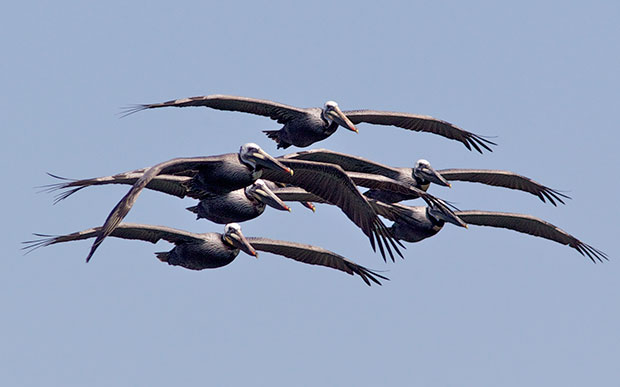
apparently drafting on each other.
It’s hard to watch the pelicans fly over for a while and not be impressed with how synchronized they seem. Shots like this where it looks like you might have simply duplicated a single bird rather than shooting two different birds are quite common,
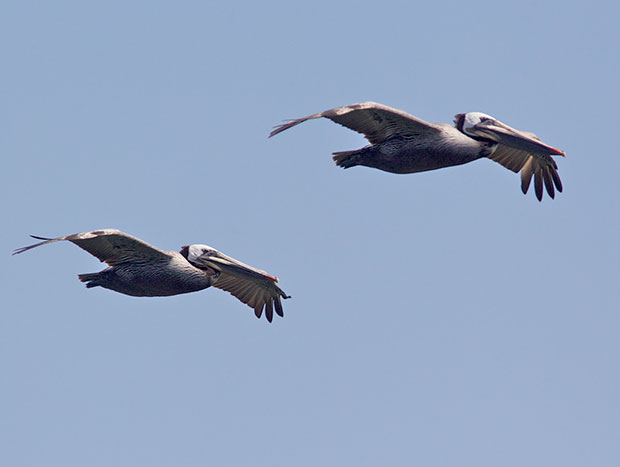
which is not to say that there are not times when you’re sure the pelicans are going to collide with each other
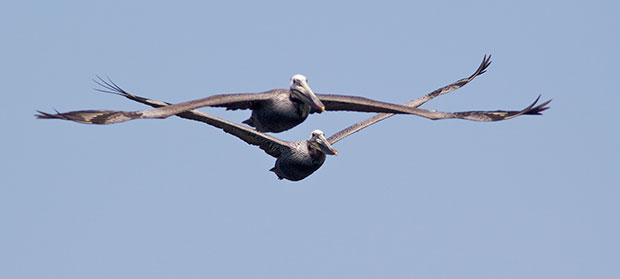
We had a great morning shooting, but I was anxious to see what else was about (and hungry for some fish and chips) so a little after noon I said goodbye to John. However, I returned later in the afternoon on my way back from Tokeland and watched flocks of pelicans appearing to play in the wind,
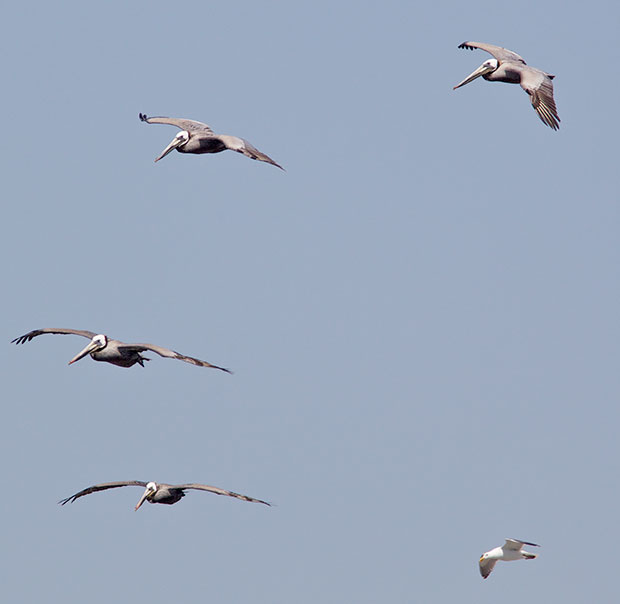
kiting in one place for a good five minutes. Perhaps having had their fill in the morning they were content to practice their flying skills, and the wind was really strong , so strong that I decided to skip trying to get pictures of the shorebirds. I wasn’t willing to take the chance of blowing sand scratching my expensive 500mm lens.
As often happens on my outings, the unexpected ends up being the highlight of the day.
Like this:
Like Loading...
